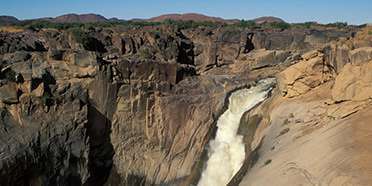
Safari Tours to Augrabies Falls NP
-
![4-Day Augrabies Falls Guided Self-Drive Camping Tour]()
4-Day Augrabies Falls Guided Self-Drive Camping Tour
$903 pp (USD)
South Africa: Guided self-driveBudgetCamping
You Visit: Upington (Start), Augrabies Falls NP, Upington (End)

Bonsai-SA 4x4 Adventures and Tours
5.0/5 – 15 Reviews
-
![8-Day Kalahari Guided Self-Drive Mid Range Tour]()
8-Day Kalahari Guided Self-Drive Mid Range Tour
$3,583 pp (USD)
South Africa: Guided self-drive
Mid-range You Visit: Upington (Start), Kgalagadi TP, Augrabies Falls NP, Upington (End)

Bonsai-SA 4x4 Adventures and Tours
5.0/5 – 15 Reviews
-
![4-Day Augrabies Falls Guided Self-Drive Mid Range Tour]()
4-Day Augrabies Falls Guided Self-Drive Mid Range Tour
$1,121 pp (USD)
South Africa: Guided self-drive
Mid-range You Visit: Upington (Start), Augrabies Falls NP, Upington (End)

Bonsai-SA 4x4 Adventures and Tours
5.0/5 – 15 Reviews

 South Africa Parks
South Africa Parks











